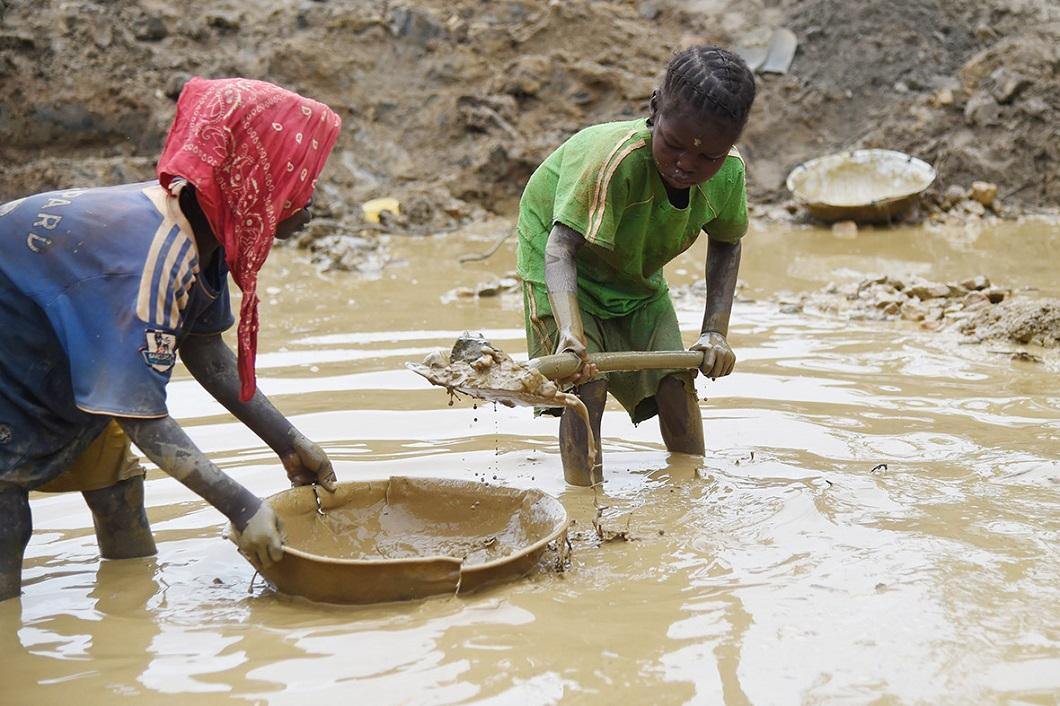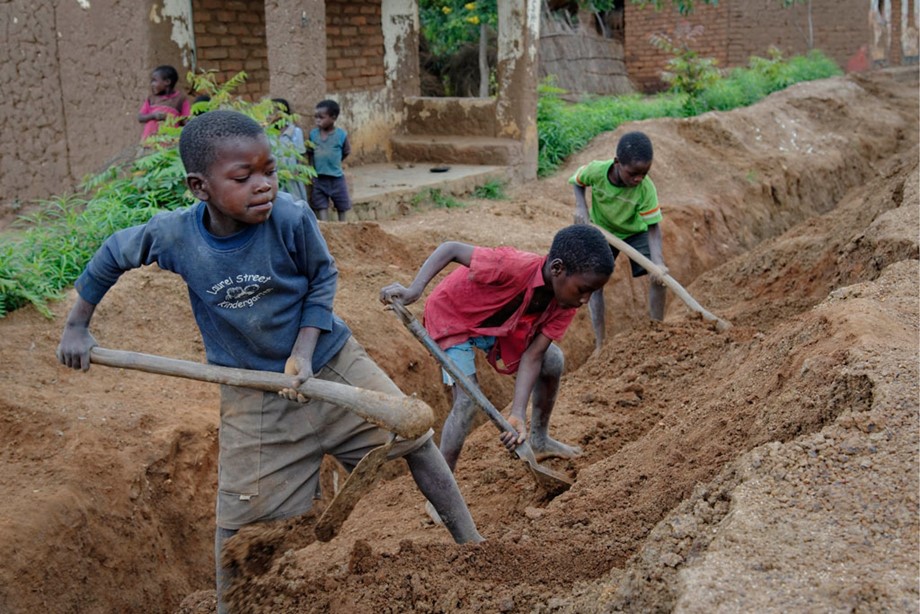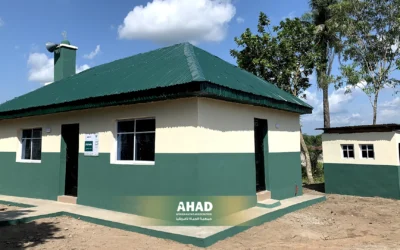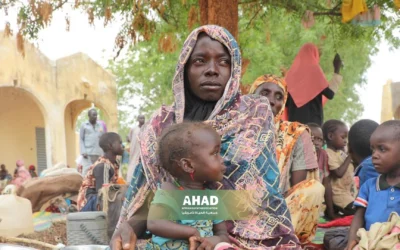Africa and child labour
The phenomenon of child labor is one of the most pressing socio-economic issues in Africa. The continent faces great challenges in this context, as millions of children are forced to work in harsh and stressful conditions. This phenomenon threatens the future of these children, hinders sustainable development in the region. In this article, we will examine the causes of child labor in Africa, its effects, and the diverse control efforts of states and international organizations.
Child labour in Africa
Child labor is the economic activities carried out by children that cause negative effects on their health, hinder their physical, mental, and social development. Child labor is a dangerous phenomenon that spreads throughout the world, especially in developing countries and those suffering from extreme poverty.
Types of child labor
Children work in agriculture by growing crops, caring for livestock, and helping with daily chores in the fields. Children working in agriculture are exposed to extreme conditions such as exposure to harmful chemicals and physical injuries.
Child labor in industry includes work in factories, mines, workshops. These activities include jobs such as packaging, assembly, and sometimes working in unsafe environments and under great stress.
Child service work includes selling in markets, working in restaurants, and providing household services such as cleaning and cooking. Children in this sector are often exploited under inhumane conditions and for very little pay.
It includes the work of children as domestic servants, where they are assigned such tasks as cleaning, caring for children, cooking. This category of children is considered one of the most exploited workers and the least legallyprotected.

Negative effects of child labor
– Working children are exposed to serious health risks as a result of working in hazardous and unhealthy environments. Examples are exposure to harmful chemicals, Sharp Objects, and gross working conditions that affect their physical development.
– Child labor hinders their access to education, as they are forced to skip school or stop education early to work and help families provide for a living.
– Child labor negatively affects their mental and social development, as they are exposed to difficult psychological and social conditions that affect their personal and social development.
In general, the international community, local governments and non-governmental organizations should intensify their efforts to combat child labor and protect childhood rights, provide a safe and healthy educational environment for all children.
Causes of child labor in Africa
Child labor in Africa is a complex and multi-causal phenomenon, associated with socio-economic factors that are characterized by great challenges. Here is a detailed explanation of the reasons for the prevalence of child labor on this continent:
Poverty
Poverty is the main factor behind the prevalence of child labor in Africa. Poor families depend on their children’s income to meet their basic needs such as food and medicine. In many cases, children’s income is the main source of livelihood for families experiencing difficult economic conditions.

Lack of Education
Lack of access to quality education or even education in general forces children to turn to the labor market. Inadequate schools or being far from poor communities make education an unavailable option for many children, pushing them to work instead of attending classes.
Crises and conflicts
Economic crises, armed conflicts, civil wars play a huge role in increasing the rates of child labor. When the infrastructure of states is destroyed, and the population is displaced, children find themselves forced to work to help their families survive.
Lack of effective legislation
In many African countries, laws protecting children’s rights from work are inadequate or poorly implemented. Weak law enforcement makes children vulnerable to exploitation, as they are exploited in hard and dangerous work for low wages without adequate legal protection.
Child labor has significant negative impacts on the lives of children and on communities in general, these include health, educational, and psychological impacts, hindering sustainable development in the region. It is necessary to intensify international and local efforts to combat this phenomenon and provide safe and healthy educational environments for children to ensure a better future for them and the communities in which they live.
Efforts to combat child labor in Africa
Child labor is a major challenge in Africa, and governments and international organizations are working hard to combat it through several integrated and multifaceted efforts:
Legislation and policies
– Governments are working to develop laws that establish the legal working age and regulate working hours for children, with the aim of protecting them from exploitation and guaranteeing their rights.
– Governments, in cooperation with international organizations such as the International Labour Organization (ILO), are strengthening their capacities to ensure effective implementation of laws and monitor compliance with them.
Education programs
– The provision of free and Compulsory Education is an essential step to attract children to schools and away from the labor market.
– Investing in the construction of schools in remote and poor areas enhances children’s access to education.
Economic initiatives
– These initiatives include the provision of microcredit to poor families to start small businesses that provide additional income.
– Providing skills training opportunities for adults helps increase sustainable employment opportunities and reduce dependence on children’s income.
Community outreach
– NGOs and governments organize awareness campaigns to change community awareness about the danger of child labor and its negative effects.
– The educational culture and awareness of the rights of the child and the importance of education as a basis for Sustainable Development and socio-economic progress are promoted.
Efforts to combat child labor in Africa require integrated coordination between governments, international organizations, and civil society. These efforts should be comprehensive and sustainable, focusing on improving the economic and social conditions of poor families, strengthening the rights of children and providing educational opportunities for all without exception.
A journey towards a better life in Africa
In the heart of the African continent, AHAD is leading efforts to improve the quality of life of the poor and disadvantaged through its comprehensive projects in the areas of health, education, water and economic development. AHAD is a pioneer in addressing the hunger crisis in Uganda, adopting integrated and sustainable strategies to achieve a positive impact that extends to the local communities.
AHAD recognizes the unique nature of the communities it serves, and chooses strategies that encourage community engagement. By empowering individuals and enhancing their capabilities, AHAD contributes to building communities capable of meeting their basic needs and economic independence.
AHAD’s projects are centered on achieving this motto, as its efforts include providing food and clean water, improving the quality of education, and promoting economic development. These initiatives enhance the economic independence of individuals and significantly improve their living conditions.
AHAD relies on building strong partnerships with local governments, international organizations, and local communities to ensure that its projects are implemented effectively and sustainably. This comprehensive cooperation enables it to effectively address the complex challenges related to hunger and poverty.
Through its tireless and continuous efforts, AHAD contributes to achieving lasting positive change in the lives of millions in Africa, leading to building a better and more sustainable future for the entire region.
You can visit the AHAD website to find out more about the projects it offers
ALSO READ
WHAT THE FOOD BASKET CONTAINS IN AHAD
Join us in our message




